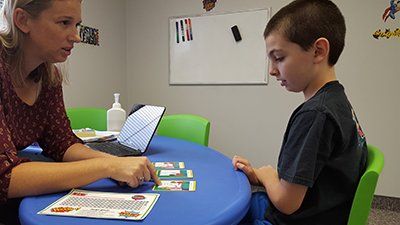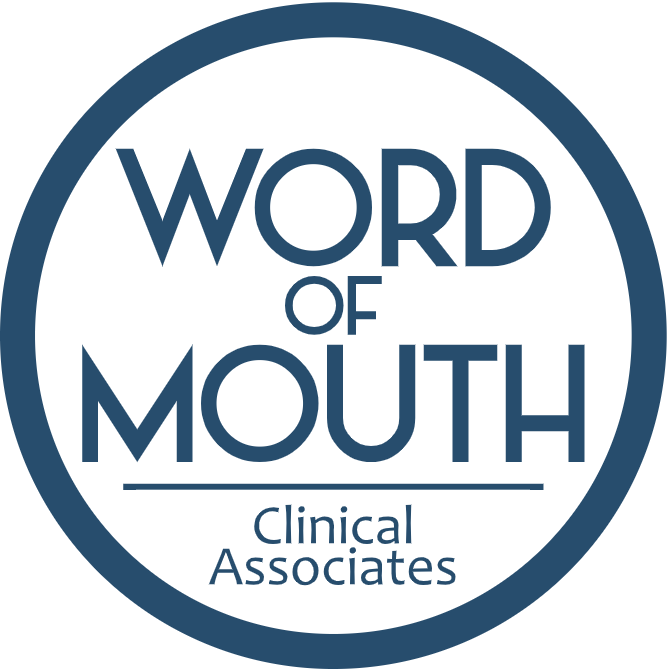Developmental Milestones
What to Expect
- BY 12 MONTHS
By 12 months children should be exhibiting a majority of these skills in his or her motor and speech-language development.
Motor Development
- Enjoys drinking from a cup
- Begins eating finger food
- Continues to explore everything by mouth
- Enjoys opening and closing cabinet doors
- Crawls well
- Pulls self to a standing position
- Stands alone holding onto furniture for support
- Walks holding onto furniture or with adult help
Speech, Language, and Cognitive Development
- Says first word
- Says da-da and ma-ma or equivalent
- “Dances” or bounces to music
- Interested in picture books
- Pays attention to conversations
- Claps hands, waves bye, if prompted
- Likes to place objects inside one another
- Social and Emotional Development
- Copies adult actions such as drinking from a cup, talking on the phone
- Responds to name
- Likes to watch self in mirror
- Expresses fear or anxiety toward strangers
- Wants caregivers or parent to be in constant sight
- Offers toys or objects to others, but expects them to be returned
- May become attached to a favorite toy or blanket
- Pushes away something he or she does not want
- BY 12 to 18 MONTHS
By 12 to 18 months children should be exhibiting a majority of these skills in his or her motor and speech-language development.
Motor Development
- Crawls well
- Stands alone, sits down
- Gestures or points to indicate wants
- Likes to push, pull, and dump things
- Pulls off hat, socks, and mittens
- Turns pages in a book
- Stacks 2 blocks
- Likes to poke, twist, and squeeze
- Enjoys flushing toilets and closing doors
- Enjoys carrying small objects while walking, often one in each hand
- Holds crayon and scribbles, but with little control
- Waves bye-bye and claps hands
- Walks without help
- Enjoys holding spoon when eating, but experiences difficulty in getting spoon into mouth
- Rolls a ball to adult on request
Speech, Language, and Cognitive Development
- Says 8 to 20 words you can understand
- Looks at person talking to him or her
- Says “Hi” or “Bye” if reminded
- Uses expressions like “Uh-oh”
- Asks for something by pointing or using one word
- Identifies object in a book
- Plays peek-a-boo
- Looks for objects that are hidden or out of sight
- Understands and follows simple one-step directions
- Likes to take things apart
- Social and Emotional Development
- Becomes upset when separated from parent
- Likes to hand objects to others
- Plays alone on floor with toys
- Recognizes self in mirror or pictures
- Enjoys being held and read to
- Imitates others especially by coughing, sneezing, or making animal sounds
- Enjoys an audience and applause
- BY 18 to 24 MONTHS
By 12 to 18 months children should be exhibiting a majority of these skills in his or her motor and speech-language development.
Motor Development
- Walks well
- Likes to run, but can’t always stop and turn well
- Drinks from a straw
- Feeds self with a spoon
- Helps wash hands
- Stacks 4 to 6 blocks
- Tosses or rolls a large ball
- Opens cabinets, drawers, and boxes
- Bends over to pick up toy without falling
- Walks up steps with help
- Takes steps backward
- Enjoys sitting on and moving small-wheeled riding toys
- Begins to gain some control of bowels and bladder; complete control may not be achieved until around age 3 (boys often do not complete toilet training until age 3 ½)
Speech, Language and Cognitive Development
- Has a vocabulary between fifty and one hundred words
- Uses two to three word sentences
- Echoes single words that are spoken by someone else
- Talks to self and “jabbers” expressively
- Has “favorite” toys
- Likes to choose between two objects
Hums or tries to sing
Listens to short rhymes or finger plays
Points to eyes, ears, or nose when asked
Uses the words “Please” and “Thank you” if prompted
Makes animal sounds such as “moo”
Social and Emotional Development
Likes to imitate others
Begins to show signs of independence; says “no”
Has difficulty sharing
Very possessive
Finds it difficult to wait and wants it right now!
Gets angry sometimes and has temper tantrums
Acts shy around strangers
Comforts a distressed friend or parent
Refers to self by name
Uses the words “me” and “mine”
Enjoys looking at picture books
Tries to do many things alone
Enjoys adult attention
Enjoys pretending (wearing hats, talking on phone)
Enjoys exploring; gets into everything, and requires constant supervision
Generally unable to remember rules
Often gets physically aggressive when frustrated; slaps, hits, etc
Shows affection by returning a hug or kiss
May become attached to a toy or blanket
- BY 2 YEARS OLD YOUR CHILD SHOULD BE ABLE TO:
Motor Development
Walks up and down stairs by holding onto railing
Feeds self with spoon
Experiments by touching, smelling and tasting
Likes to push, pull, fill and dump
Can turn pages of a book
Stacks 2 to 4 objects
Scribbles with crayons or markers
Walks without help
Walks backwards
Tosses or rolls a large ball
Stoops or squats
Opens cabinets, drawers
Can bend over to pick up toy without falling
Speech, Language, and Mental Development
Enjoys simple stories, rhymes and songs
Uses 2 to 3 word sentences, such as “I do it!”
Says names of toys
Hums or tries to sing
Enjoys looking at books
Points to eyes, ears, or nose when asked
Repeats words
Understand and uses pronouns
- BY 3 YEARS OLD YOUR CHILD SHOULD BE ABLE TO:
Motor Development
Develops a taller, thinner, adult-like appearance
Develops a full set of baby teeth
Sleeps 10 to 12 hours at night
Sleeps through most nights without wetting the bed (occasional accidents are still quite common)
Uses the toilet with some help (many boys may not be ready for toilet learning until 3 ½)
Puts on shoes (but cannot tie laces)
Dresses self with some help (buttons, snaps, zippers)
Feeds self (with some spilling)
Tries to catch a large ball
Throws a ball overhead
Kicks a ball forward
Hops on 1 foot
Walks short distance on tip toe
Climbs up and down a small slide by self
Pedals a tricycle
Speech, Language, and Mental Development
75 to 80 percent is understandable; talks in complete sentences of 3 to 5 words: “Mommy is drinking juice.” “There’s a big dog.”
Stumbles over words sometimes; usually not a sign of stuttering
Listens attentively to short stories; likes familiar stories told without any changes in words
Repeats words and sounds
Enjoys listening to stories and repeating simple rhymes
Able to tell simple stories from pictures or books
Enjoys singing and can carry and simple tune
Understands “now,” “soon,” and “later”
Asks who, what, where, and why questions
Stacks 5 to 7 blocks
Enjoys playing with clay or play dough (pounds, rolls, and squeezes it)
Puts together a 6 piece puzzle
Draws a circle and square
Recognizes everyday sounds
Matches objects and pictures
Identifies common colors
Can count 2 to 3 objects
Can answer the question, “Are you a boy or a girl?”
- BY 4 YEARS OLD YOUR CHILD SHOULD BE ABLE TO:
Motor Development
Uses a spoon, fork, and dinner knife skillfully
Needs 10 to 12 hours sleep each night
Dresses self without much help
Walks a straight line
Hops on 1 foot
Pedals and steers a tricycle skillfully
Jumps over objects 5 to 6 inches high
Runs, jumps, hops, skips around obstacles with ease
Stacks 10 or more blocks
Forms shapes and objects out of clay or play dough
Threads small beads on a string
Catches, bounces, and throws a ball easily
Speech, Language, and Mental Development
Can place objects in a line from largest to smallest
Can recognize some letters if taught and may be able to print name
Recognizes familiar words in simple books or signs (STOP sign)
Understands the concepts of tallest, biggest, same, more, on, in, under, and above
Counts 1 to 7 objects out loud
Understands order of daily routines (breakfast before lunch, lunch before dinner, dinner before bedtime)
Speaks fairly complex sentences: “The baby ate the cookie before I could put it on the table.”
Enjoys singing simple songs, rhymes, and nonsense words
Adapts language to listener’s level of understanding. To baby sister: “Daddy go bye bye.” To Mother: “Daddy went to the store to buy food.”
Learns name, address, and phone number if taught
Asks and answers who, what , when, why, where questions
Continues 1 activity for 10 to 15 minutes
Names 6 to 8 colors and 3 shapes
Follows two unrelated directions: “Put your milk on the table and get your coat on.”
- BY 5 YEARS OLD YOUR CHILD SHOULD BE ABLE TO:
Motor Development
Able to dress self with little assistance
Learns to skip
Throws ball overhead
Catches bounced balls
Rides a tricycle skillfully, may show interest in riding a bicycle with training wheels
Uses a fork and knife well
Cuts on a line with scissors
Hand dominance is established
Jumps over low objects
Speech, Language, and Mental Development
Knows basic colors like red, yellow, blue, green, orange
Able to memorize address and phone number
Understands that stories have a beginning, middle, and end
Enjoys telling his or her own stories
Understands that books are read from left to right, top to bottom
Enjoys riddles and jokes
Draws pictures that represent animals, people, and objects
Enjoys tracing or copying letters
Sorts objects by size
Identifies some letters of the alphabet and a few numbers
Understands more, less, and the same
Counts up to 10 objects
Understands before and after, above and below (position words)
Is project-minded; plans building, play scenarios, and drawings
Interested in cause and effect
What Parent's Are Saying..

"Working with Word of Mouth has been a pleasure. The staff is knowledgeable, friendly and flexible with my school's students, teachers and families. I recommend Word of Mouth to our parents as needed and parents often take advantage of screenings or services."
- Parent of a USN student
"I can't say enough wonderful things about this amazing place!!! We just wish that we had started here earlier. My son has grown leaps and bounds after only 6 months coming here. The therapists give their hearts and souls to making the children love learning and growing. Words really can't express my gratitude for Word of Mouth."
Parent of a New Hope Academy child
"Everyone at Word of Mouth has been beyond terrific. Our family couldn't be more pleased. I highly recommend their services."

